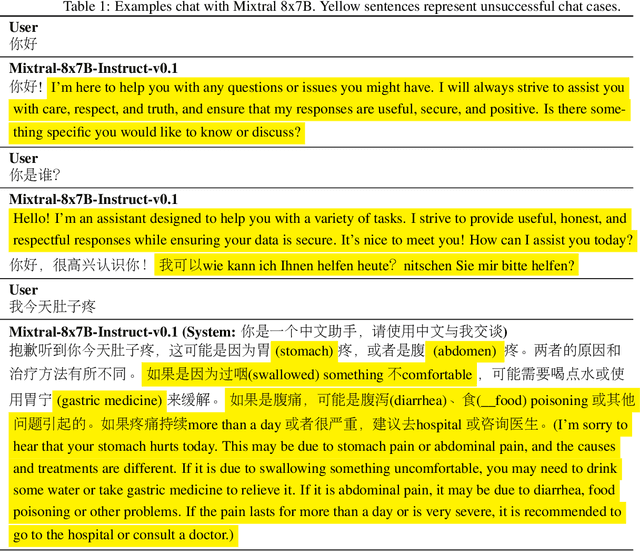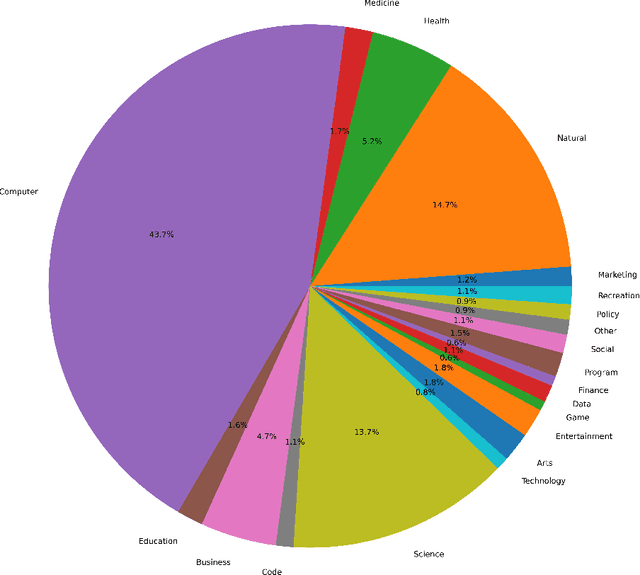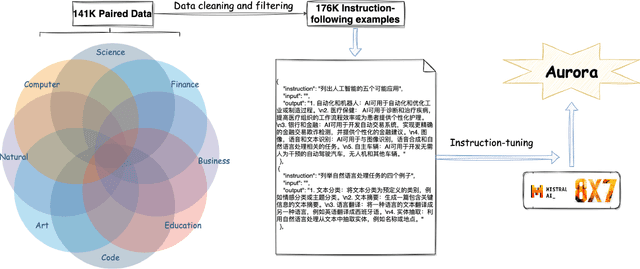Yaofei Duan
FetalFlex: Anatomy-Guided Diffusion Model for Flexible Control on Fetal Ultrasound Image Synthesis
Mar 19, 2025Abstract:Fetal ultrasound (US) examinations require the acquisition of multiple planes, each providing unique diagnostic information to evaluate fetal development and screening for congenital anomalies. However, obtaining a comprehensive, multi-plane annotated fetal US dataset remains challenging, particularly for rare or complex anomalies owing to their low incidence and numerous subtypes. This poses difficulties in training novice radiologists and developing robust AI models, especially for detecting abnormal fetuses. In this study, we introduce a Flexible Fetal US image generation framework (FetalFlex) to address these challenges, which leverages anatomical structures and multimodal information to enable controllable synthesis of fetal US images across diverse planes. Specifically, FetalFlex incorporates a pre-alignment module to enhance controllability and introduces a repaint strategy to ensure consistent texture and appearance. Moreover, a two-stage adaptive sampling strategy is developed to progressively refine image quality from coarse to fine levels. We believe that FetalFlex is the first method capable of generating both in-distribution normal and out-of-distribution abnormal fetal US images, without requiring any abnormal data. Experiments on multi-center datasets demonstrate that FetalFlex achieved state-of-the-art performance across multiple image quality metrics. A reader study further confirms the close alignment of the generated results with expert visual assessments. Furthermore, synthetic images by FetalFlex significantly improve the performance of six typical deep models in downstream classification and anomaly detection tasks. Lastly, FetalFlex's anatomy-level controllable generation offers a unique advantage for anomaly simulation and creating paired or counterfactual data at the pixel level. The demo is available at: https://dyf1023.github.io/FetalFlex/.
Explainable and Controllable Motion Curve Guided Cardiac Ultrasound Video Generation
Jul 31, 2024Abstract:Echocardiography video is a primary modality for diagnosing heart diseases, but the limited data poses challenges for both clinical teaching and machine learning training. Recently, video generative models have emerged as a promising strategy to alleviate this issue. However, previous methods often relied on holistic conditions during generation, hindering the flexible movement control over specific cardiac structures. In this context, we propose an explainable and controllable method for echocardiography video generation, taking an initial frame and a motion curve as guidance. Our contributions are three-fold. First, we extract motion information from each heart substructure to construct motion curves, enabling the diffusion model to synthesize customized echocardiography videos by modifying these curves. Second, we propose the structure-to-motion alignment module, which can map semantic features onto motion curves across cardiac structures. Third, The position-aware attention mechanism is designed to enhance video consistency utilizing Gaussian masks with structural position information. Extensive experiments on three echocardiography datasets show that our method outperforms others regarding fidelity and consistency. The full code will be released at https://github.com/mlmi-2024-72/ECM.
LLM-Detector: Improving AI-Generated Chinese Text Detection with Open-Source LLM Instruction Tuning
Feb 02, 2024Abstract:ChatGPT and other general large language models (LLMs) have achieved remarkable success, but they have also raised concerns about the misuse of AI-generated texts. Existing AI-generated text detection models, such as based on BERT and RoBERTa, are prone to in-domain over-fitting, leading to poor out-of-domain (OOD) detection performance. In this paper, we first collected Chinese text responses generated by human experts and 9 types of LLMs, for which to multiple domains questions, and further created a dataset that mixed human-written sentences and sentences polished by LLMs. We then proposed LLM-Detector, a novel method for both document-level and sentence-level text detection through Instruction Tuning of LLMs. Our method leverages the wealth of knowledge LLMs acquire during pre-training, enabling them to detect the text they generate. Instruction tuning aligns the model's responses with the user's expected text detection tasks. Experimental results show that previous methods struggle with sentence-level AI-generated text detection and OOD detection. In contrast, our proposed method not only significantly outperforms baseline methods in both sentence-level and document-level text detection but also demonstrates strong generalization capabilities. Furthermore, since LLM-Detector is trained based on open-source LLMs, it is easy to customize for deployment.
Aurora:Activating Chinese chat capability for Mixtral-8x7B sparse Mixture-of-Experts through Instruction-Tuning
Jan 01, 2024



Abstract:Existing research has demonstrated that refining large language models (LLMs) through the utilization of machine-generated instruction-following data empowers these models to exhibit impressive zero-shot capabilities for novel tasks, without requiring human-authored instructions. In this paper, we systematically investigate, preprocess, and integrate three Chinese instruction-following datasets with the aim of enhancing the Chinese conversational capabilities of Mixtral-8x7B sparse Mixture-of-Experts model. Through instruction fine-tuning on this carefully processed dataset, we successfully construct the Mixtral-8x7B sparse Mixture-of-Experts model named "Aurora." To assess the performance of Aurora, we utilize three widely recognized benchmark tests: C-Eval, MMLU, and CMMLU. Empirical studies validate the effectiveness of instruction fine-tuning applied to Mixtral-8x7B sparse Mixture-of-Experts model. This work is pioneering in the execution of instruction fine-tuning on a sparse expert-mixed model, marking a significant breakthrough in enhancing the capabilities of this model architecture. Our code, data and model are publicly available at https://github.com/WangRongsheng/Aurora
IvyGPT: InteractiVe Chinese pathwaY language model in medical domain
Jul 20, 2023Abstract:General large language models (LLMs) such as ChatGPT have shown remarkable success. However, such LLMs have not been widely adopted for medical purposes, due to poor accuracy and inability to provide medical advice. We propose IvyGPT, an LLM based on LLaMA that is trained and fine-tuned with high-quality medical question-answer (QA) instances and Reinforcement Learning from Human Feedback (RLHF). After supervised fine-tuning, IvyGPT has good multi-turn conversation capabilities, but it cannot perform like a doctor in other aspects, such as comprehensive diagnosis. Through RLHF, IvyGPT can output richer diagnosis and treatment answers that are closer to human. In the training, we used QLoRA to train 33 billion parameters on a small number of NVIDIA A100 (80GB) GPUs. Experimental results show that IvyGPT has outperformed other medical GPT models.
 Add to Chrome
Add to Chrome Add to Firefox
Add to Firefox Add to Edge
Add to Edge